¶ Understanding Connections
The FlexVertex Data Multiverse is fundamentally built on the premise of connectivity among data objects. Understanding and defining these connections are pivotal to navigating and harnessing the complex relationships within your data landscape. This brief elaborates on the alternatives available for connecting objects within FlexVertex, detailing their applications and guiding you on choosing the appropriate type for your needs.
¶ Overview of Connection Types
In FlexVertex, there are two primary ways to connect data objects:
-
Named Connections:
- Base Class: All named connections derive from the
FlexConnectionbase class. - Purpose: These are designed for rapid connection establishment between data objects where intricate object orientation is not a priority.
- Use Case: Named connections are ideal for straightforward scenarios where the main objective is to link data points without the complexities of object-oriented features.
- Base Class: All named connections derive from the
-
Class-based Connections:
- Base Class: These connections also originate from the
FlexConnectionbase class but offer enhanced capabilities. - Object Orientation: Class-based connections easily support full object orientation, including the ability to implement multiple levels of class inheritance.
- Properties: They allow for the definition of associated properties, which can be crucial for more detailed searches and data handling.
- Use Case: Suited for sophisticated data models that benefit from a structured, object-oriented approach, these connections are preferable when your data schema requires depth and hierarchical organization.
- Base Class: These connections also originate from the
¶ Choosing the Right Connection Type
When deciding between named and class-based connections, consider the complexity and future scalability of your data model:
- For Complex Models: If your project involves a detailed and layered data structure, class-based connections are advisable. They provide the robustness needed for intricate object relations and inheritance, making them suitable for large-scale and evolving data environments.
- For Simpler Needs: If the goal is merely to establish direct links between data objects without the necessity for future scalability or complex querying, named connections offer a quicker and more straightforward solution.
¶ Example Queries to Illustrate Connections
¶ Baseline Classes and Data
To better illustrate how both named and class-based connections operate within FlexVertex, let's look at some examples. We'll use Voyager, but the same concepts apply in any FlexVertex API.
- Named Connection Example: In this scenario, we're quickly connecting
Personobjects, usingFriendas the name for the connection.
We begin by creating the objects
IFlexObject marco = new FlexObject(schema, "Person");
marco.setProperty("Name", "Marco");
marco.save();
IFlexObject kublai = new FlexObject(schema, "Person");
kublai.setProperty("Name", "Kublai");
kublai.save();
Next, we establish the connection:
marco.connectTo(kublai, "Friend");
As we describe in another technical brief, the beauty of the FlexVertex connection architecture is that you can start your search on either side of a connection to find all related objects. Thus, we only need to define one connection between Marco and Kublai.
- Class-based Connection Example: For this instance, imagine that we want to track different types of visits to locations. Specifically, we want to delineate between business and leisure trips.
We first create an abstract base class for visits, calling it Visited. Because it's an abstract class, it can contain no data - but it can be queried.
IFlexClass visited = schema.createClass("Visited", "sysclass:FlexConnection");
visited.isAbstract(true);
visited.createProperty("VisitDate", FlexType.DateTime).setAttribute("DateTimeFormat","yyyy-MM-dd");
visited.save();
Next, we extend the class for both Business and Leisure trips, creating specialized properties for each one:
IFlexClass business = schema.createClass("Business", "Visited");
business.createProperty("ChargeCode", FlexType.String).isMandatory(true).isNotNull(true);
business.save();
IFlexClass leisure = schema.createClass("Leisure", "Visited");
leisure.createProperty("Activity", FlexType.String).isMandatory(true).isNotNull(true);
leisure.createProperty("Promotion", FlexType.Boolean);
leisure.createProperty("Bundle", FlexType.Boolean);
leisure.save();
¶ Sample Queries
To illustrate these examples, we'll use FlexVertex Commmander and Periscope.
First, let's search connections named Friend to find Marco's friends:
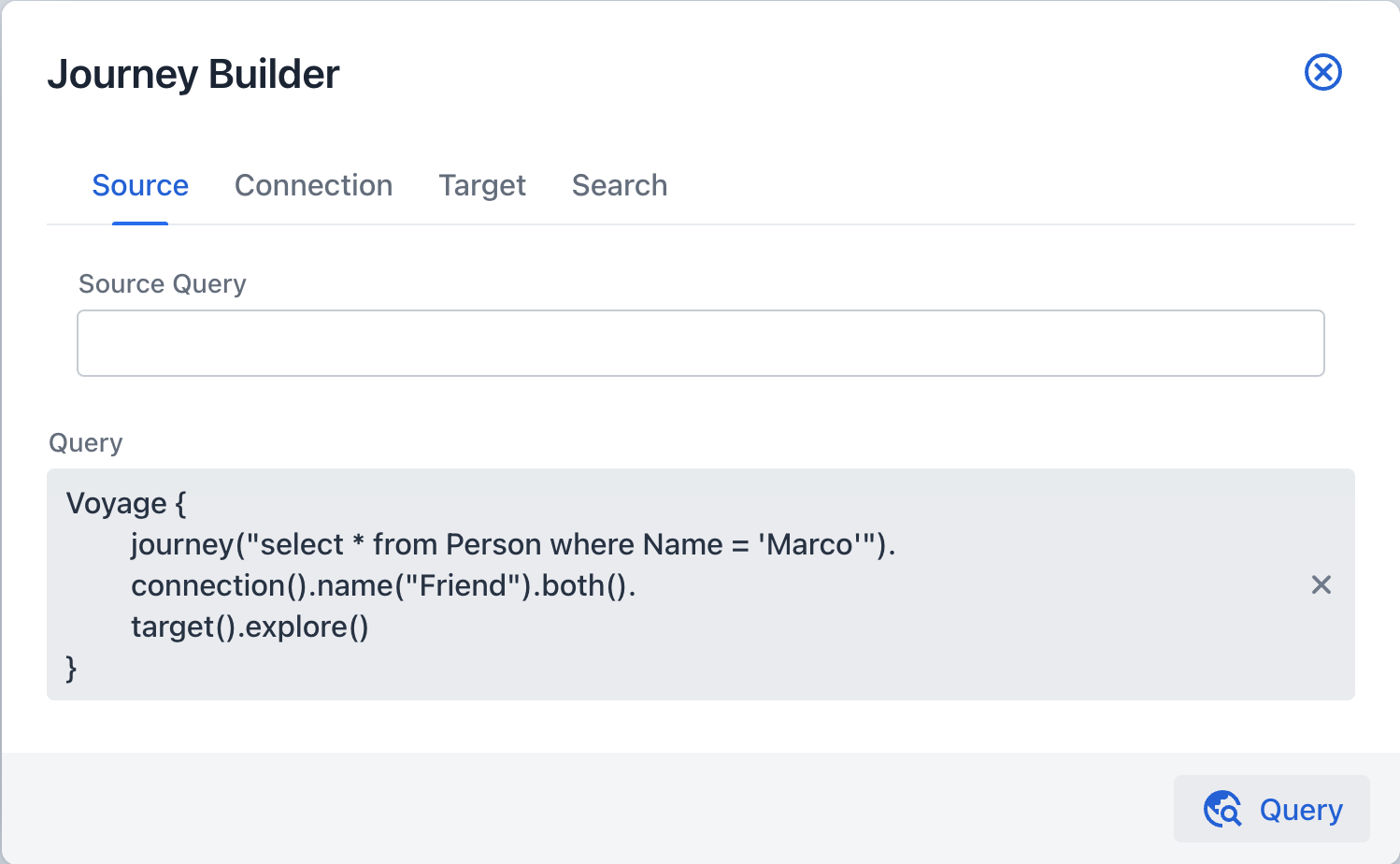
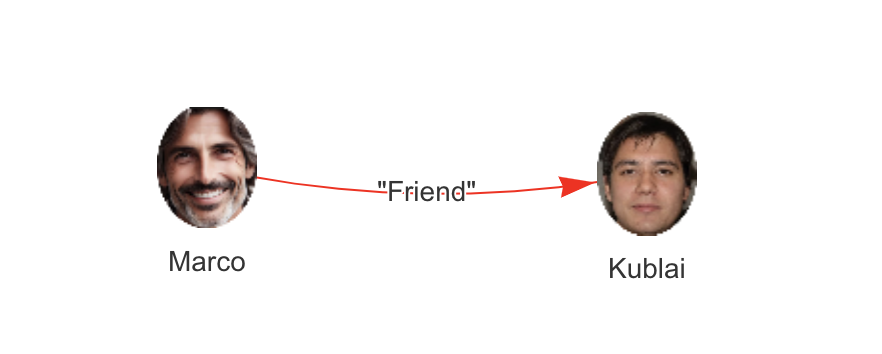
Next, let's run a query to see all types of connections using the Visited abstract class:
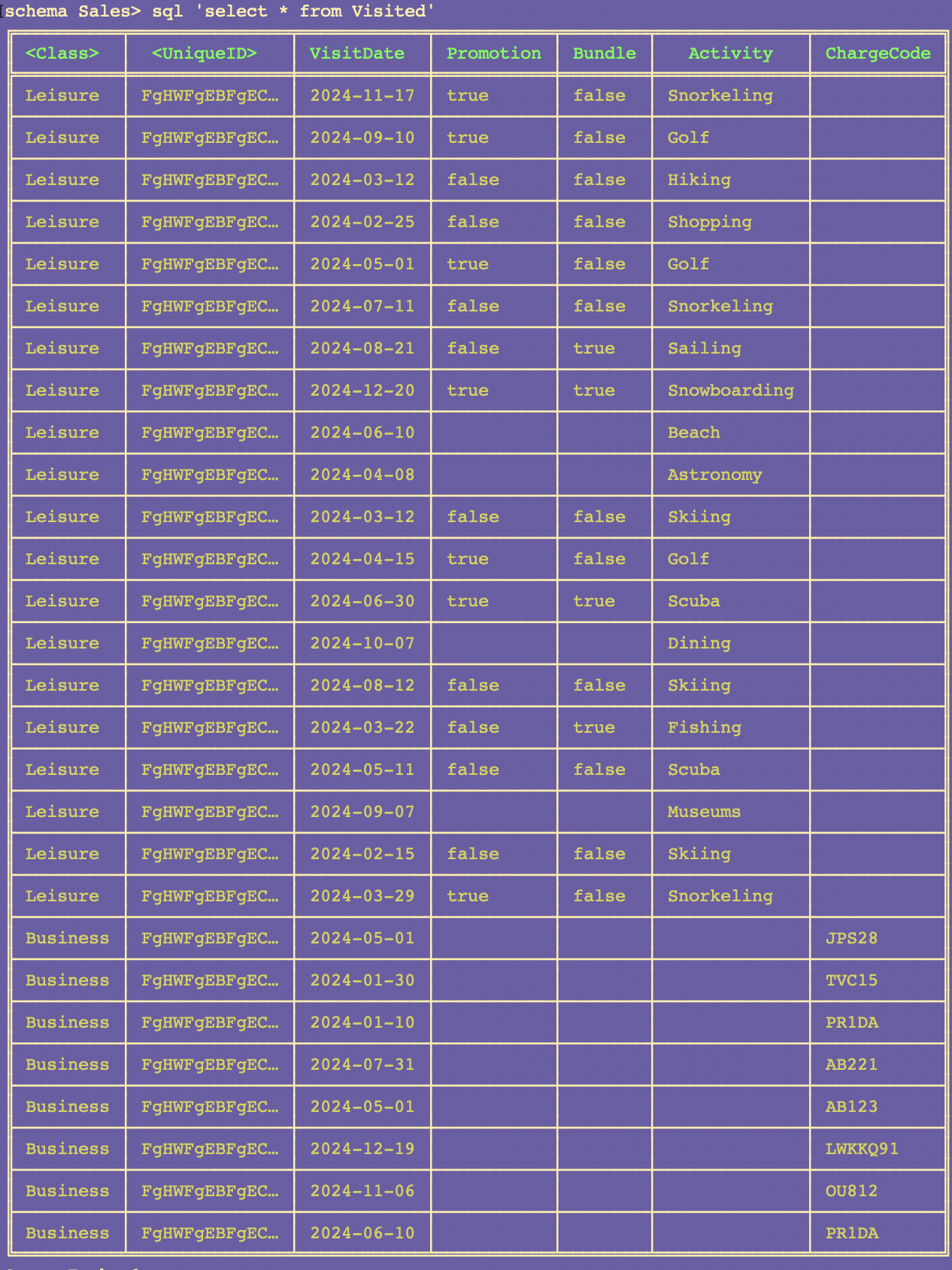
We can then move on to a more specialized query, focused on Leisure derived class connections:
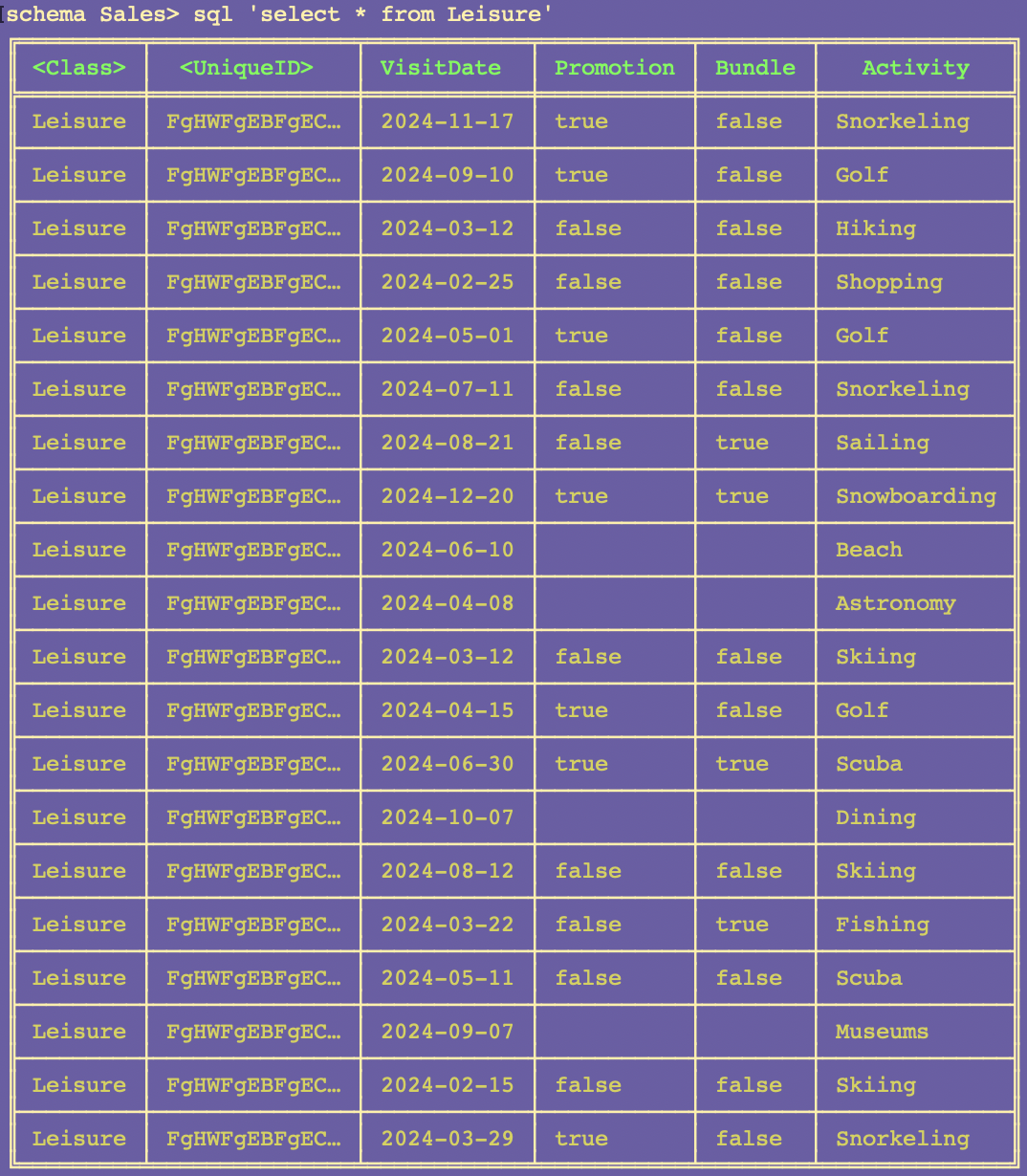
Finally, let's search on a property for the Leisure class connection:
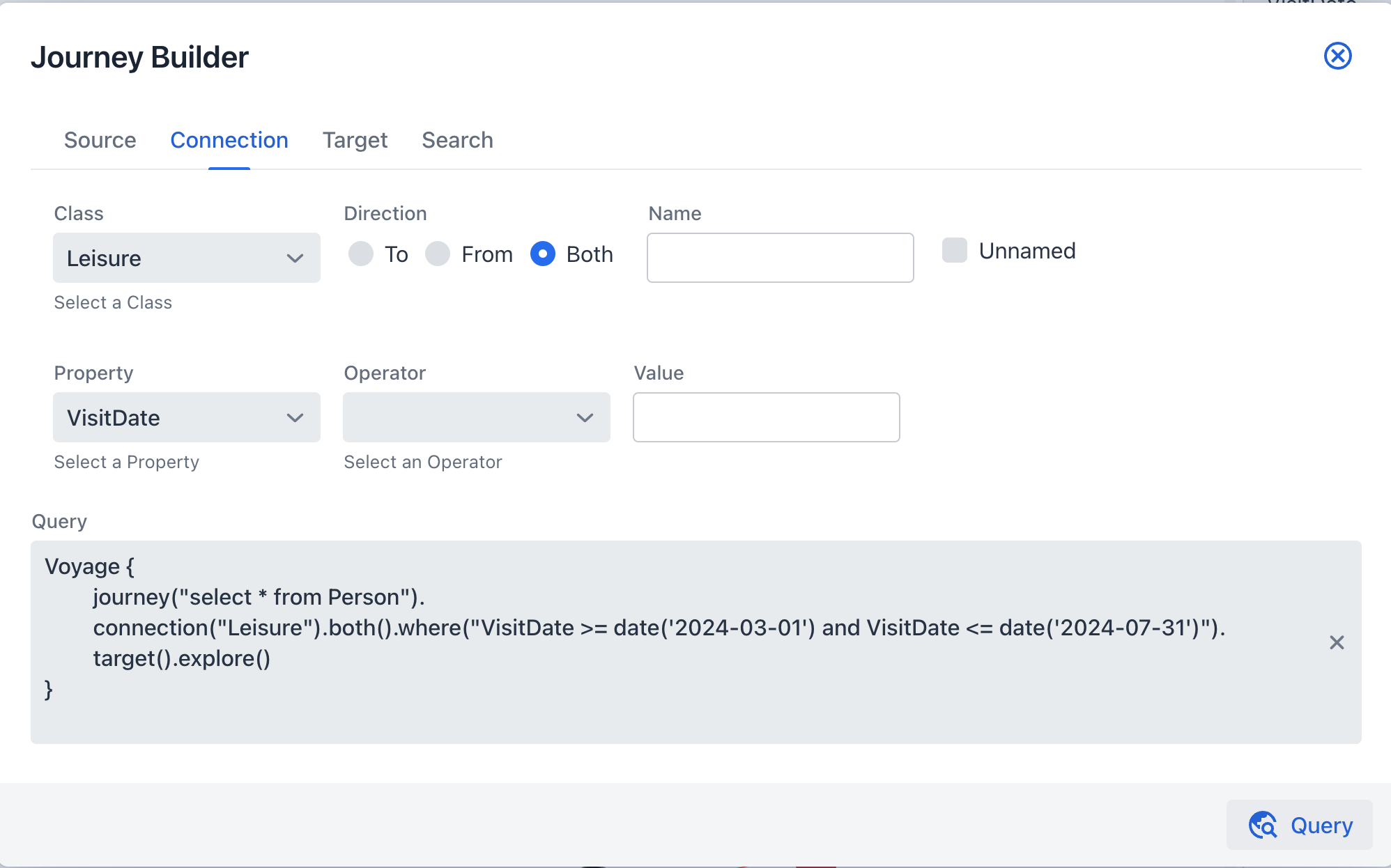
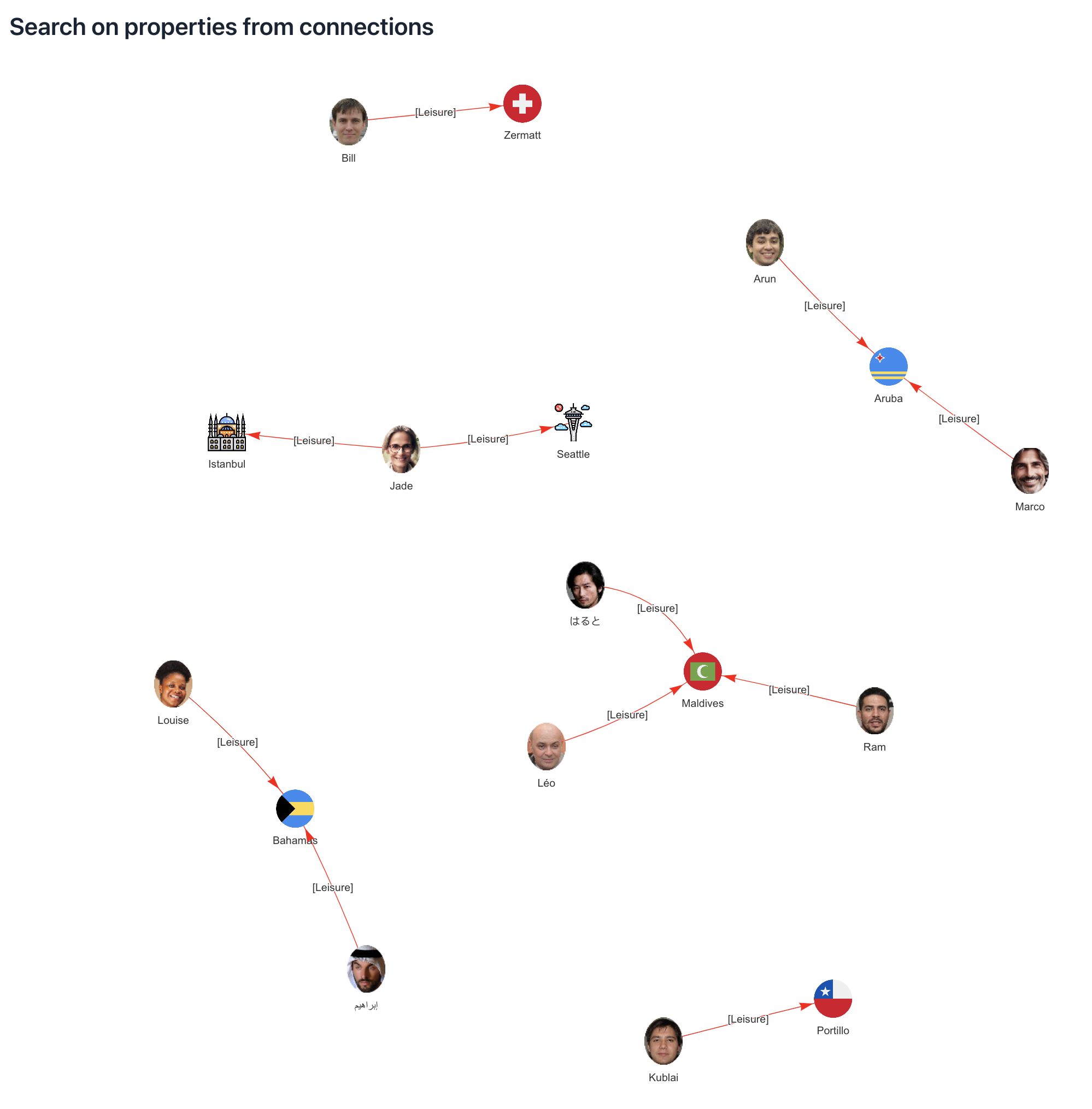
¶ Conclusion
This brief has explored the critical roles that connections play within the FlexVertex Data Multiverse, offering insights into how to effectively implement and utilize these connections. By choosing the appropriate connection type, developers can optimize their data models for both performance and scalability, ensuring that their data ecosystems are robust and future-ready. For more detailed examples and technical specifications, users are encouraged to consult the comprehensive guides available in the FlexVertex documentation.